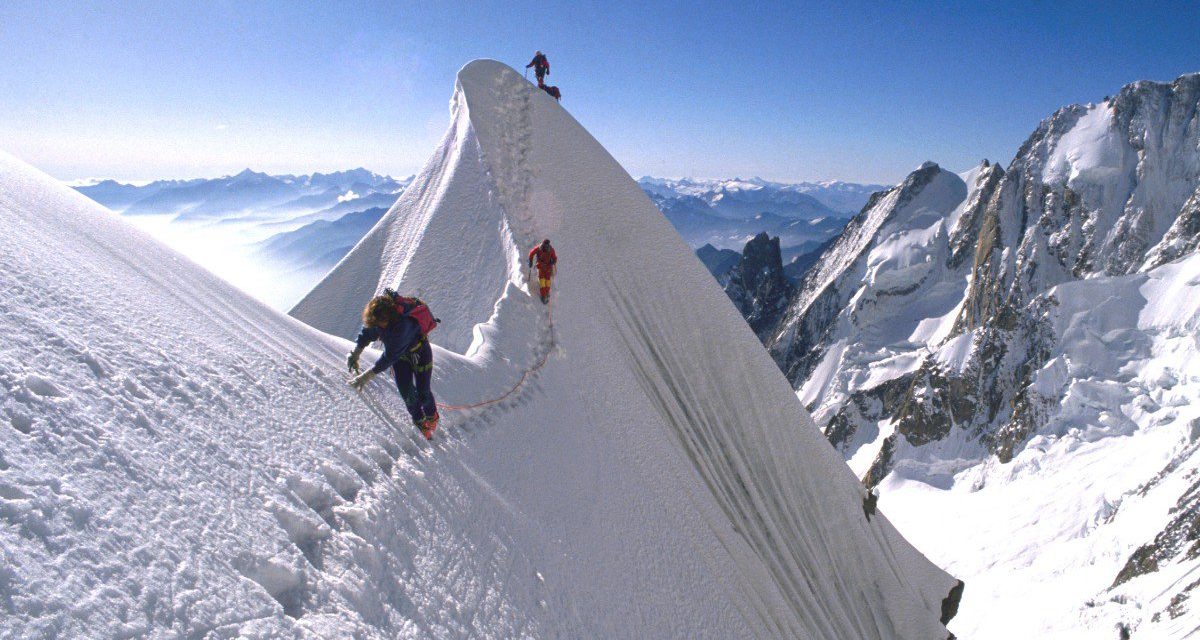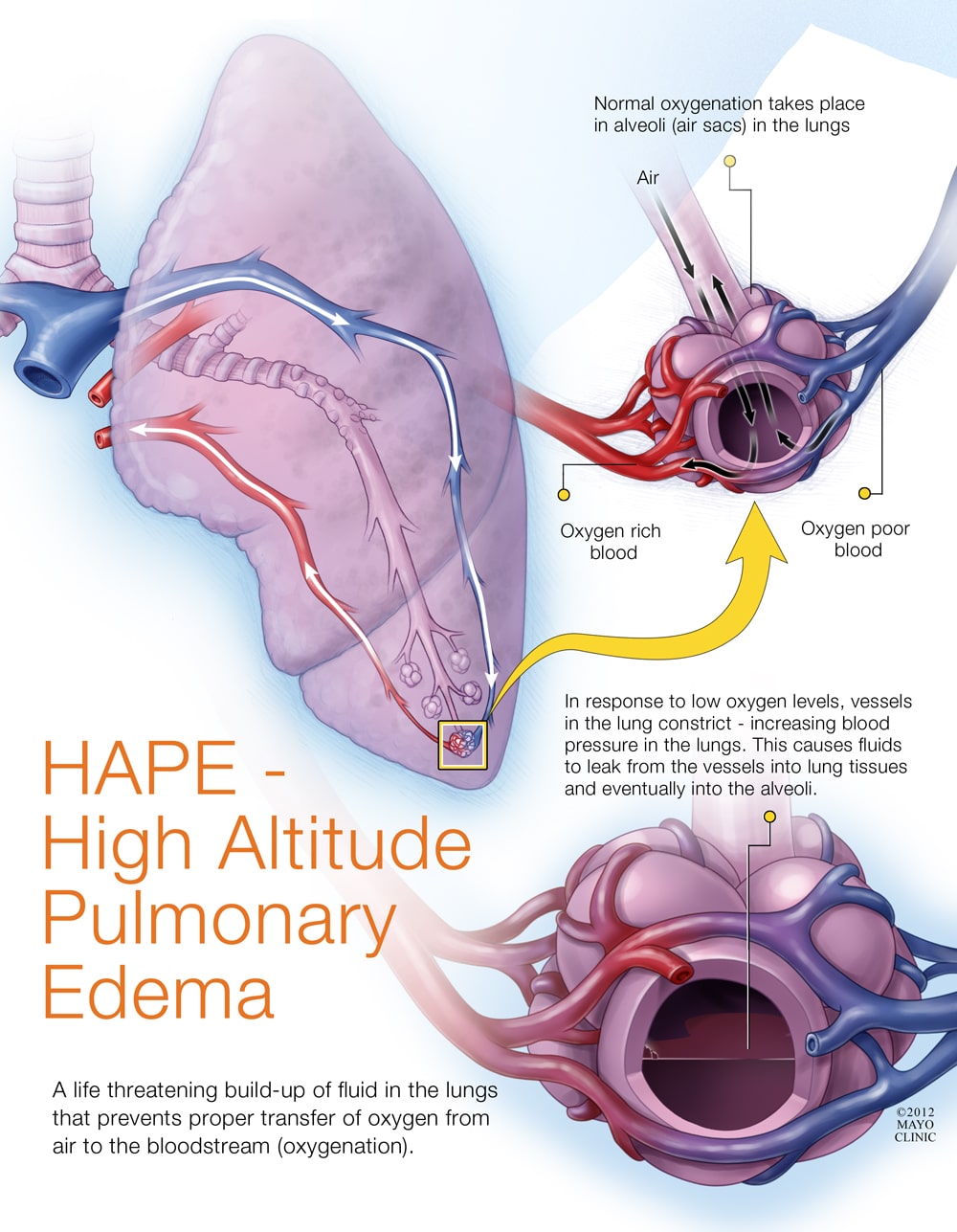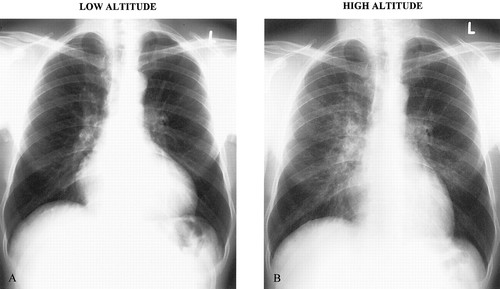
High Altitude Pulmonary Edema (HAPE) is not only one of the top causes of death in high altitude mountaineering, but it is made even more dangerous by its unpredictable nature. HAPE has claimed the lives of even the fittest, most knowledgeable and most prepared mountaineers. While there are signs that susceptibility to the condition may be linked to genetics, this connection has yet to be made by modern science, making it completely unpredictable, and a danger to all who choose to venture into the clouds.
HAPE occurs when blood vessels in the lungs constrict as a result of a lack of oxygen, causing fluid to leak into the lungs. This prevents the oxygenation of blood which if not recognized and treated in a timely manner is absolutely fatal. That is why it is so important to recognize the symptoms of HAPE right away. These symptoms include headaches, coughing, fever, pinkish phlegm, shortness of breath after exertion, and discomfort in the chest.

If you or someone you know is experiencing these symptoms at high altitudes, the first thing to do is to move to lower ground. Often times this can be enough to reduce their symptoms and prevent a life-threatening event. However, if symptoms and discomfort persist at lower altitudes you should seek medical attention immediately.
The best way to prevent HAPE is to acclimatize properly. HAPE is rarely seen in climbers who spend 5-7 days acclimating at a given altitude. It is recommended to ascend at rates less than or equal to 1,300 ft per day and sleep at lower altitudes. Furthermore, you should avoid extreme physical exertion during your first days at high altitudes as exercise-induced circulatory changes tend to worsen or even cause pulmonary edema.

It is crucial to take these prevention tactics seriously when traveling in higher altitudes. This is not something that only occurs on Everest! It can happen to your friend at a ski resort or at your favorite backcountry spot. HAPE is nondiscriminatory and WILL happen to you if you do not take the necessary steps to avoid it. Awareness is the best way to keep people safe. Acclimatize properly, advance slowly, and listen to yourself and your crew for symptoms of HAPE and you should have no trouble keeping everybody safe the next time you are in high altitudes.